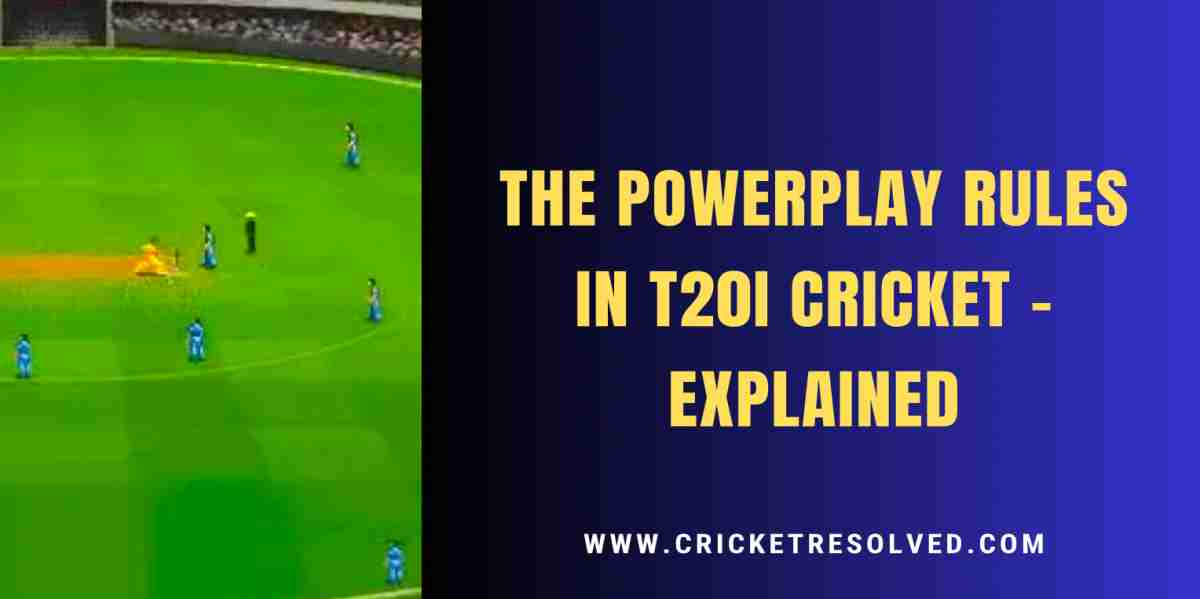
T20I cricket came into existence in 2005 courtesy of a one-off international game between the then 50-over world cup champions Australia and New Zealand. The game is played well inside a day in most cases, just like the ODI format, and the latter can be called the bridge between the T20I and Test formats of the game.
In this shortened version of the one-day cricket, there are fielding restrictions much like the 50-over format of the game. But the powerplay rule is straightforward in the T20 format of international cricket as opposed to the 50-over format. This thing mentioned above, we have seen earlier in a detailed guide on the powerplay rule in ODI cricket, and please do check that. It is to be noted that the fielding restrictions do not apply to the longest format of the game, Test cricket, where the fields can be spread out.
Powerplay is an exciting rule publicised by the ICC in cricket to enhance the entertainment level and to draw large crowds in the limited-over format of the game. This rule was established to make big runs a common phenomenon in white ball cricket while also bringing the right balance. It also brings the bowlers to play with more attacking field setups in the initial phase, especially in favourable conditions.
What is a Powerplay in Cricket?
For the unversed, Powerplay is the term the ICC uses to denote the fielding restrictions in limited-overs cricket. A bowling team must follow this set of rules during their time on the field.
T20I Powerplay Rules
T20 cricket is a game that is played as 20-over side a game in an uninterrupted contest. In these 20 overs, the first six overs bowled by the fielding team are the mandatory powerplay overs. Not more than two fielders are allowed outside the 30-yard circle, and a minimum of 9 players, including the bowler & wicketkeeper, should be inside the circle for the stipulated period of 6 overs.
Once the Powerplay is over, the bowling team can spread the field with as many as five fielders who can be populated outside the 30-yard circle. However, they don’t need to have five fielders shielding the boundaries. This rule is subject to change in case of a rain-curtailed game. When the game gets shortened, or the overs get reduced, the bowling team will also get fewer overs with this fielding restriction. For instance, if the number of overs is reduced from 20 to 12, only four mandatory powerplay overs must be bowled.
Also Read: The Cricket Fielding Positions – Explained
Since the inception of T20I cricket in 2005, the powerplay rule hasn’t changed a bit by the ICC, unlike the powerplay rule in the ODI format, which has gone through several rounds of trials, changes, or iterations.
How are Powerplays in T20I cricket different from the ODI format?
While ODI cricket has all 50 overs divided into phases of 3 powerplays, T20I cricket just has a solitary powerplay, the first six overs of the innings. In ODIs, overs from 11-40, a maximum of 4 players are allowed outside the ring; in the last ten overs, they can include one more fielder outside. But in the case of T20I cricket, there are no powerplay overs beyond the first six overs of the innings.
Relevant Read: How do Bigger Grounds in Australia impact T20 cricket?



Comments (5)
Net Run Rate Calculation in Cricket – Explained - Cricket Resolvedsays:
May 3, 2023 at 9:15 am[…] Relevant Cricket Guides: The Rules of Powerplay Overs in ODI & T20I […]
How Does the IPL Auction Work? - Explained - Cricket Resolvedsays:
June 21, 2023 at 10:44 am[…] Read Next: The Powerplay Overs Rule in T20I Cricket – Explained […]
Super Over in Cricket: A One-Over Drama Unleashed - Cricket Resolvedsays:
June 22, 2023 at 5:38 am[…] Read Next: The Powerplay Overs Rule in T20I Cricket – Explained […]
Why is Rashid Khan a Successful Bowler in T20s? - Cricket Resolvedsays:
July 26, 2023 at 11:11 am[…] Also Read: The Powerplay Overs Rule in T20I Cricket – Explained […]
What sets Suryakumar Yadav Apart From the Rest? - Cricket Resolvedsays:
August 2, 2023 at 12:13 pm[…] with the bat in T20 matches. He may not have yet cracked the ODI puzzle, but he goes bonkers in T20 games — be it international or […]